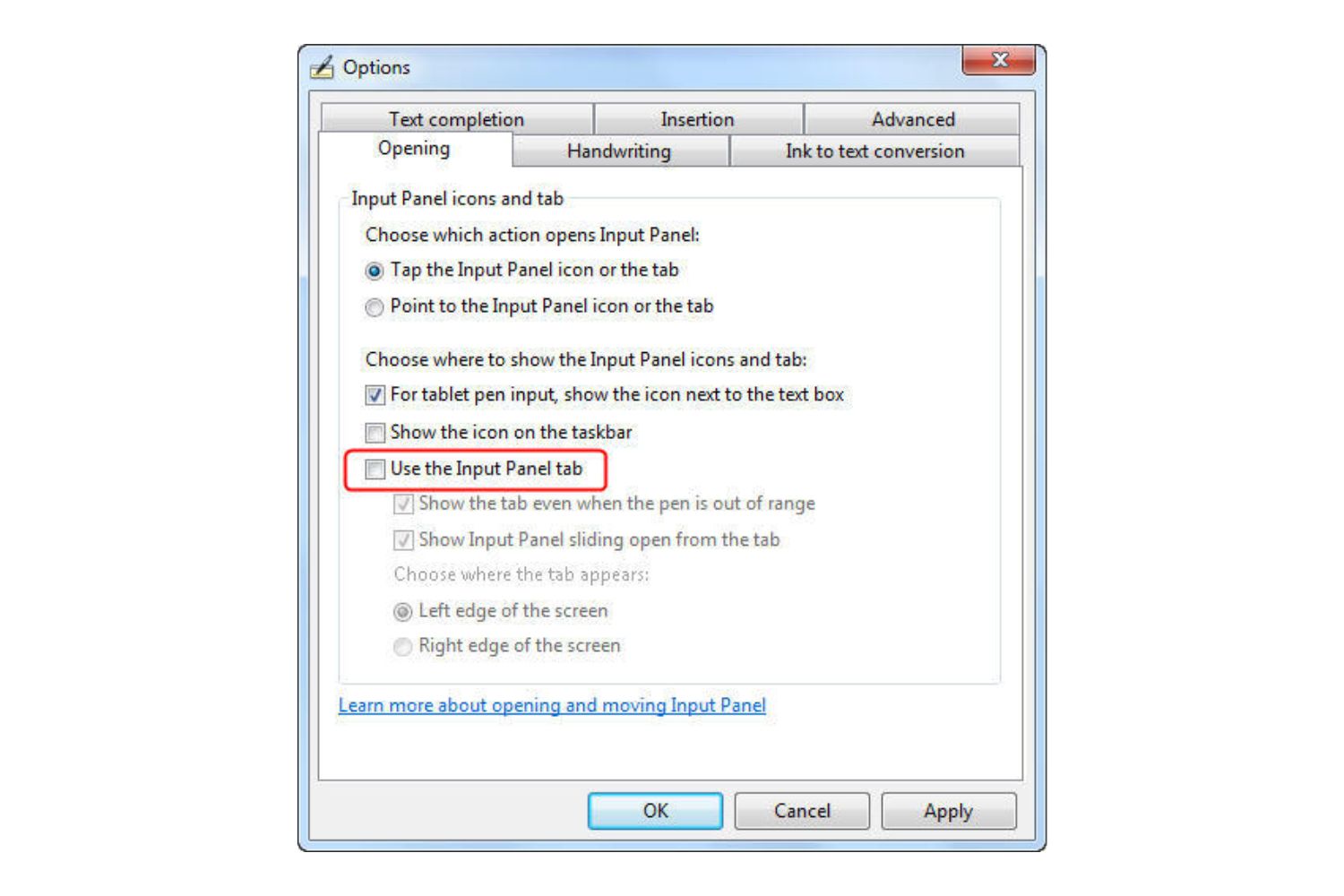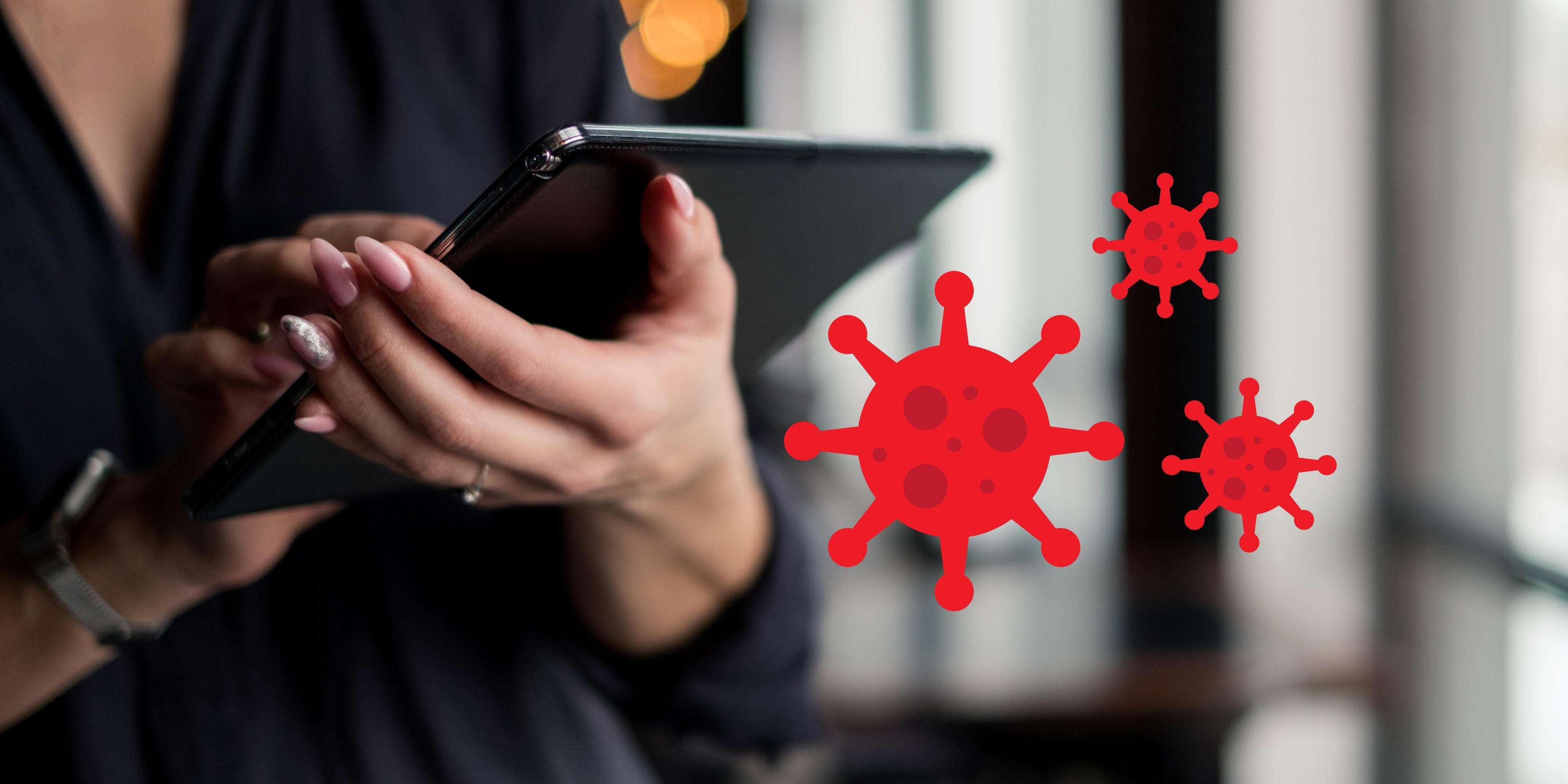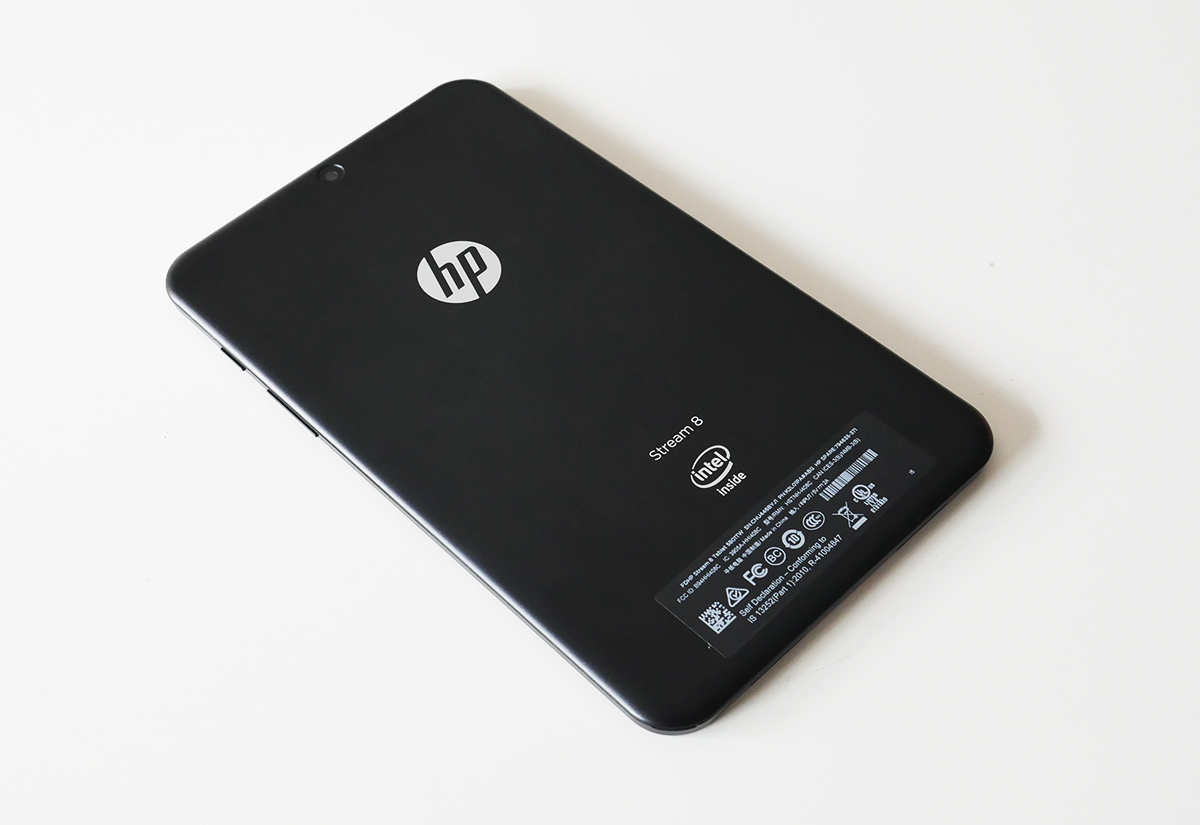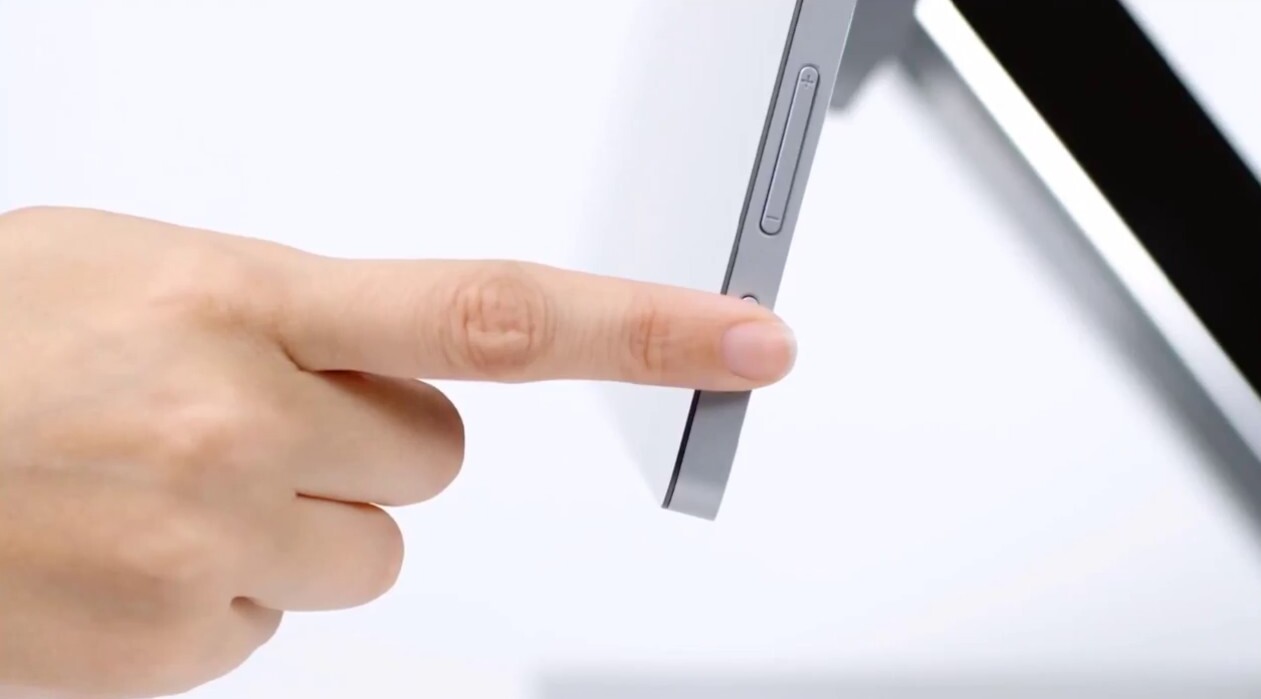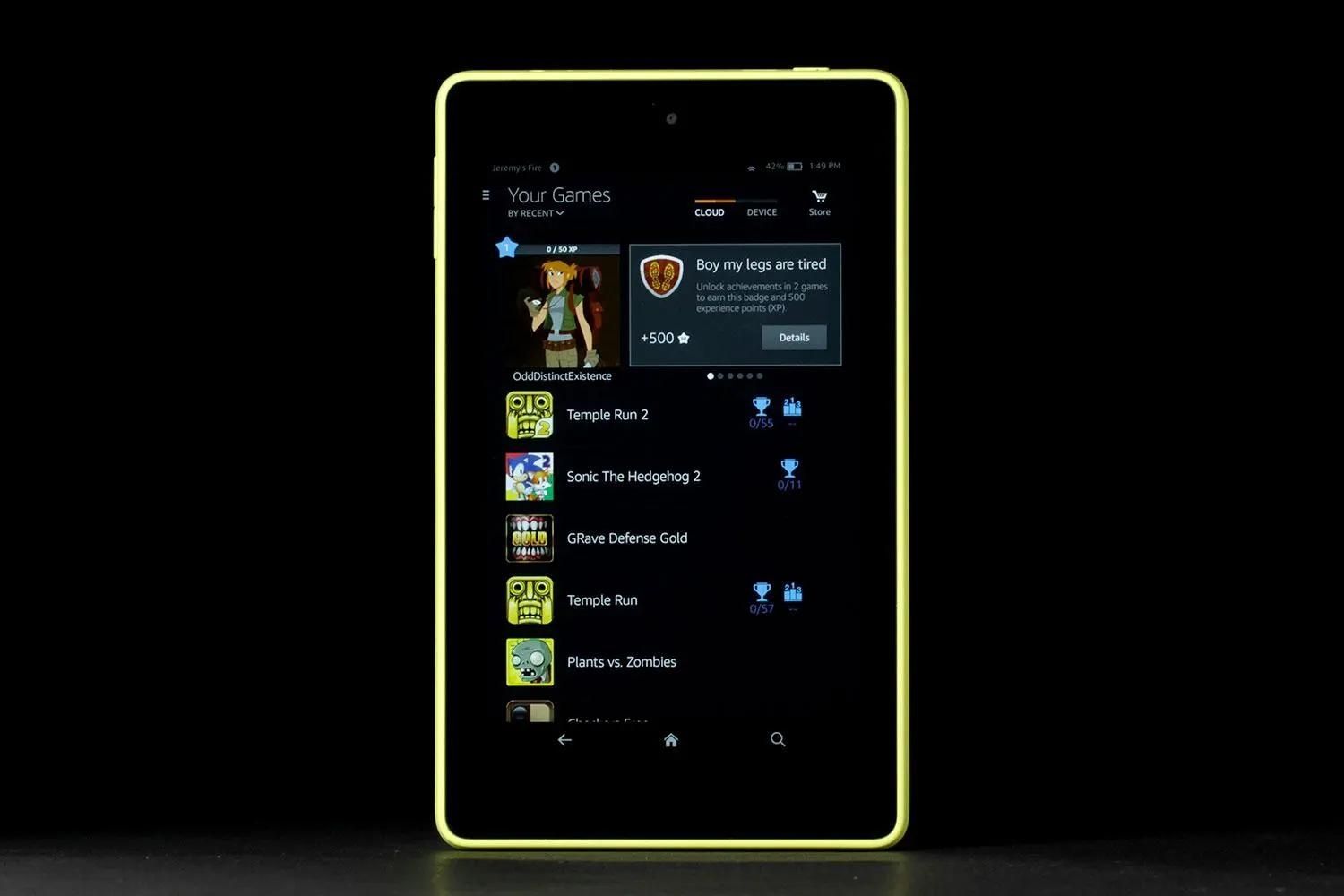Introduction
Have you ever experienced the peculiar and frustrating issue of your tablet clicking by itself? It’s a perplexing situation that can leave you scratching your head and wondering what could be causing it. Whether you’re playing games, browsing the internet, or simply trying to navigate your tablet, the unexpected random clicks can disrupt your user experience and make it difficult to use your device effectively.
In this article, we will explore the possible causes of your tablet randomly clicking by itself and provide you with some troubleshooting steps to help you resolve this issue. While it can be a common problem encountered by tablet users, it’s important to understand that there can be various underlying factors contributing to this behavior.
Before we delve into the potential causes and solutions, it’s crucial to note that this phenomenon is not limited to a specific tablet brand or model. Whether you own an Apple iPad, Samsung Galaxy Tab, Amazon Fire, or any other tablet on the market, the issue of self-clicking can arise.
Now, let’s dive into the possible reasons behind your tablet’s mysterious and unwanted clicks and explore how you can address this problem.
Defining the issue: Tablet randomly clicking by itself
The issue of a tablet randomly clicking by itself refers to the unexpected and uninitiated tapping or clicking actions that occur on the screen without any user input. It can be frustrating as it interrupts your usage and makes it difficult to perform tasks effectively. This phenomenon can occur on any brand or model of tablet and is not limited to a particular operating system.
When your tablet exhibits this behavior, you may notice various symptoms, such as apps opening or closing without your command, text input being entered spontaneously, or menus being navigated without your interaction. These phantom touches can occur at any location on the screen and at random intervals, making it challenging to pinpoint the cause.
It’s important to differentiate between accidental touches, where physical contact with the screen causes unintended actions, and self-clicking, where the tablet registers taps or clicks without any external influence. In the case of self-clicking, you might even notice the screen being active while your hands are nowhere near it.
This issue can significantly impact your tablet experience, hindering your ability to use apps, browse the internet, or engage in any activity that requires touch input. It can also drain your tablet’s battery faster as the device remains active due to the continuous phantom touches.
While the exact cause of this issue might be elusive, understanding the possible factors contributing to it can help in troubleshooting and finding a resolution. In the following sections, we will explore various potential causes, including touch screen calibration problems, software glitches, external factors, and hardware issues.
Possible causes of the issue
When it comes to the issue of your tablet randomly clicking by itself, there are several potential causes that you should be aware of. Let’s take a closer look at each of these possibilities:
1. Touch screen calibration problems: One of the common reasons for self-clicking is an improper touch screen calibration. Over time, the calibration settings can become misaligned, causing the tablet to register touches inaccurately. This can result in phantom taps or clicks on the screen.
2. Software glitches and bugs: Software issues can also lead to your tablet behaving erratically, including random clicks. Bugs in the operating system or specific applications can interfere with the touch responsiveness and cause unexpected user input.
3. External factors influencing the screen: The environment in which you use your tablet can impact its touch sensitivity. Elements like moisture, dust, or even the presence of a protective cover can interfere with the screen’s responsiveness, leading to self-clicking.
4. Hardware problems: Faulty hardware components can also contribute to the issue. Defective touch sensors, damaged display panels, or loose connections within the device can all result in the tablet registering phantom touches.
While these are the most common causes, it’s worth noting that each tablet model and brand may have unique factors that contribute to the issue. Identifying the specific cause of your tablet’s self-clicking requires a process of elimination and troubleshooting.
In the next sections, we will discuss some troubleshooting steps that can help you address the issue and mitigate the problem of your tablet randomly clicking by itself. Let’s explore potential solutions to get your tablet back to its normal functioning state.
Touch screen calibration problems
One of the common causes of your tablet randomly clicking by itself can be touch screen calibration problems. Touch screen calibration refers to the process of aligning the touch sensitivity of the screen with its display, ensuring accurate tracking of your finger movements. When the calibration is off, your tablet may register touches or clicks in the wrong locations, leading to the self-clicking issue.
To troubleshoot touch screen calibration problems, follow these steps:
- Check for touch screen issues: Start by determining if there are any specific areas on the screen that tend to trigger the self-clicking behavior more frequently. If it seems to be localized, there might be a calibration issue specific to that part of the screen.
- Restart your tablet: A simple restart of your tablet can sometimes help recalibrate the touch screen. This can resolve temporary glitches and restore proper touch responsiveness.
- Perform a touch screen recalibration: On some tablets, you can manually recalibrate the touch screen through the settings menu. Look for the “Touch” or “Accessibility” settings and locate the option to recalibrate. Follow the on-screen instructions to complete the process.
- Use third-party calibration apps: There are also third-party apps available that can help recalibrate your tablet’s touch sensitivity. These apps often provide a more detailed and customizable calibration process, allowing you to fine-tune the screen’s response to your touch. Explore the app store for touch screen calibration tools that are compatible with your tablet.
If touch screen calibration problems are at the root of the issue, performing these steps should help address the self-clicking problem. However, if the issue persists, move on to the next potential cause and troubleshooting step.
Software glitches and bugs
Software glitches and bugs can also contribute to your tablet randomly clicking by itself. Inconsistent software behavior can interfere with the touch sensitivity, causing the device to register phantom touches or clicks. Here are some steps you can take to troubleshoot software-related issues:
- Check for system updates: Keeping your tablet’s operating system up to date is crucial for maintaining optimal performance. Check for any available system updates and install them. These updates often include bug fixes and improvements that can resolve software-related issues.
- Restart your tablet: A simple restart can sometimes help clear temporary glitches and resolve software issues. Restarting your tablet can refresh the software and potentially eliminate any bugs causing the self-clicking behavior.
- Close background apps: It’s possible that certain apps running in the background could be causing conflicts and inadvertently triggering the self-clicking behavior. Close all unnecessary apps and see if the issue persists.
- Clear app cache and data: If the problem seems to be specific to a particular app, clearing the app’s cache and data may help. Go to the device settings, navigate to the “Apps” or “Applications” section, and select the app causing the issue. From there, you can clear the cache and data associated with the app.
- Reinstall problematic apps: If clearing the cache and data didn’t resolve the issue, consider uninstalling and reinstalling the problematic app. This can help eliminate any corrupted files or settings that may be causing the self-clicking behavior.
By following these steps, you can address software glitches and bugs that might be triggering the self-clicking behavior on your tablet. If the problem persists, we will explore other potential causes in the next sections to help you find a solution.
External factors influencing the screen
Sometimes, external factors can influence the touch sensitivity of your tablet’s screen, leading to the issue of it randomly clicking by itself. Factors such as moisture, dust, and the presence of protective covers can interfere with the screen’s responsiveness. Here are some troubleshooting steps to address these external factors:
- Remove any protective covers or cases: If you have a protective cover or case on your tablet, try removing it to see if it improves the touch sensitivity. Some covers can obstruct the screen or interfere with the touch sensors, causing phantom touches. Once removed, test if the self-clicking behavior persists.
- Clean the screen: Dust, smudges, or other debris on the screen can affect touch sensitivity. Use a clean, lint-free cloth to gently wipe the screen and remove any dirt or fingerprints. Be sure to power off the device before cleaning and avoid using harsh chemicals or excessive moisture that could damage the screen.
- Avoid moisture exposure: Moisture or high humidity levels can impact touch responsiveness. Keep your tablet away from areas prone to moisture and avoid using it with wet hands. If your tablet has come into contact with liquid, power it off immediately, and let it dry completely before turning it on again.
- Adjust the screen sensitivity settings: Some tablets offer screen sensitivity settings that can be adjusted to suit your preferences. Explore the device settings and look for options related to touch sensitivity. Experiment with different sensitivity levels to find the one that minimizes self-clicking without impacting normal touch interaction.
By addressing these external factors, you can improve the touch sensitivity of your tablet’s screen and potentially eliminate the issue of it randomly clicking by itself. If the problem persists, continue to the next potential cause and troubleshooting step to help narrow down the issue.
Hardware problems
If your tablet continues to randomly click by itself, even after troubleshooting software and external factors, it’s possible that the issue is related to hardware problems. Faulty hardware components can disrupt the touch sensitivity and cause the self-clicking behavior. Here are some steps you can take to address potential hardware-related issues:
- Inspect the display: Check the screen for any visible damage, such as cracks, scratches, or areas that appear to be unresponsive. Physical damage to the display panel can interfere with touch input and lead to phantom touches.
- Restore loose connections: In some cases, the self-clicking issue may be caused by loose connections within the device, particularly between the touch sensor and the motherboard. If you’re comfortable with it, you can carefully open your tablet and check for any loose or disconnected cables. Ensure that all connections are secure.
- Seek professional assistance: If you’re unable to identify or resolve the hardware problem on your own, it’s best to seek professional assistance. Visit an authorized service center or contact the manufacturer’s support for further evaluation and repair.
It’s important to note that attempting to fix hardware issues yourself can void the warranty or cause further damage to the device. If your tablet is still under warranty, consider contacting the manufacturer for guidance on how to proceed.
By addressing potential hardware problems, you can rule out any physical issues that may be causing the self-clicking behavior on your tablet. If the issue persists after performing these steps, it’s advisable to seek professional help to diagnose and resolve the problem.
Troubleshooting steps to fix the issue
If your tablet is randomly clicking by itself, it can be incredibly frustrating. To help you resolve this problem, we have compiled a list of troubleshooting steps that can assist in fixing the issue. Follow these steps to identify and resolve the problem causing the self-clicking behavior:
- Restart the tablet: Start by performing a simple restart of your tablet. This can help clear temporary glitches and software errors that may be causing the self-clicking behavior.
- Cleaning the screen and removing any protective covers: Use a clean, lint-free cloth to carefully wipe the screen and remove any dust, smudges, or debris. If you have a protective cover or case on your tablet, try removing it to eliminate any interference with the touch sensitivity.
- Check for software updates: Ensure that your tablet’s operating system and installed apps are up to date. Software updates often include bug fixes, performance improvements, and enhanced touch responsiveness that can address self-clicking issues.
- Reset touch screen calibration: If you suspect touch screen calibration issues, navigate to the touch settings on your tablet and look for an option to reset or recalibrate the touch screen. Follow the on-screen instructions to perform the reset.
- Disable any external peripherals: Disconnect any external peripherals, such as a keyboard or mouse, from your tablet. Sometimes, these peripherals can introduce conflicts or signal interference that lead to random clicks.
- Factory reset: If all else fails and the self-clicking issue persists, you can try performing a factory reset on your tablet. This will erase all data and return your device to its original factory settings. Make sure to back up your important data before proceeding with this step as it cannot be undone.
It’s important to note that performing a factory reset should be the last resort, as it erases all data on your tablet. If the issue remains unresolved after going through these troubleshooting steps, it may be necessary to seek professional assistance or contact the manufacturer’s support for further guidance.
By following these troubleshooting steps, you increase your chances of identifying and resolving the issue of your tablet randomly clicking by itself. Remember to approach each step carefully and be patient throughout the process.
Restart the tablet
One of the simplest and most effective troubleshooting steps you can take when your tablet is randomly clicking by itself is to restart the device. A restart can help clear temporary glitches and software errors that may be causing the self-clicking behavior.
To restart your tablet, follow these steps:
- Press and hold the power button: Locate the power button on your tablet and press and hold it until a menu appears on the screen.
- Select “Restart” or “Reboot”: Use the volume buttons or the on-screen options to navigate to the “Restart” or “Reboot” option. Select it by pressing the power button.
- Wait for the tablet to restart: Your tablet will shut down and then power back on. It may take a few moments to complete the restart process.
After the tablet restarts, check if the self-clicking issue still persists. In many cases, a simple restart can resolve temporary software glitches or conflicts, restoring the normal functionality of the touch screen.
If the self-clicking problem continues after the restart, move on to the next troubleshooting step to further diagnose and address the issue.
Cleaning the screen and removing any protective covers
In some cases, the issue of your tablet randomly clicking by itself can be attributed to external factors such as dirt, dust, smudges, or the presence of protective covers. Cleaning the screen and removing any protective covers can help improve touch sensitivity and eliminate any interference that may be causing the self-clicking behavior.
To clean the screen and remove protective covers, follow these steps:
- Power off your tablet: Before cleaning the screen, ensure that your tablet is powered off to avoid accidental touches.
- Prepare a clean, soft cloth: Use a lint-free, microfiber cloth or a screen cleaning cloth specifically designed for electronic devices. Avoid using paper towels, abrasive materials, or cleaning solutions that may damage the screen.
- Gently wipe the screen: Starting from the top and working your way down, use gentle, circular motions to wipe the screen. Pay attention to any areas that appear smudged or dirty. Take care not to apply excessive pressure, as this can cause damage.
- Remove any protective covers or cases: If you have a protective cover or case on your tablet, try removing it to see if it improves the touch sensitivity. Some covers can obstruct the screen or interfere with the touch sensors, causing phantom touches.
Once you have cleaned the screen and removed any protective covers, power on your tablet and check if the self-clicking issue persists. If necessary, test the touch sensitivity across different areas of the screen to ensure that the problem is resolved.
If the self-clicking issue continues even after cleaning the screen and removing protective covers, proceed to the next troubleshooting step to further investigate the cause and potential solutions.
Check for software updates
Keeping your tablet’s software up to date is essential for ensuring optimal performance and addressing potential issues like the random clicking problem. Software updates often include bug fixes, improvements in touch responsiveness, and other optimizations that can help resolve software-related issues.
To check for software updates on your tablet, follow these steps:
- Connect to the internet: Ensure that your tablet is connected to a stable Wi-Fi network or has a cellular data connection.
- Open the tablet’s Settings: Locate the “Settings” app on your tablet. It is usually represented by a gear or cogwheel icon.
- Find the Software Update option: Look for an option like “Software Update,” “System Updates,” or a similar name. The location of this option may vary depending on the tablet model and operating system.
- Check for updates: Tap on the “Software Update” option and follow the on-screen instructions to check for any available updates for your tablet’s operating system and installed apps.
- Download and install updates: If updates are available, follow the prompts to download and install them. This process may take some time, depending on the size of the updates.
- Restart your tablet: After installing updates, it is often recommended to restart your tablet to ensure that the changes take effect.
After updating the software on your tablet, check if the issue of random clicking persists. In many cases, installing the latest software updates can address software glitches, improve touch sensitivity, and resolve issues that may be causing the self-clicking behavior.
If the problem continues after updating the software, proceed to the next troubleshooting step to further diagnose and resolve the issue.
Reset touch screen calibration
If your tablet is still experiencing the issue of random clicking, even after cleaning the screen and checking for software updates, it may be necessary to reset the touch screen calibration. Touch screen calibration ensures that your tablet accurately registers your touch inputs. If the calibration becomes misaligned, it can result in erratic touch behavior, including random clicks.
To reset the touch screen calibration on your tablet, follow these steps:
- Access the tablet’s Settings: Open the “Settings” app on your tablet. You can usually find this app on the home screen or in the app drawer.
- Navigate to the Display or Touch settings: Look for options related to “Display” or “Touch.” The exact location may vary depending on the tablet’s make and model.
- Find the Touch Screen Calibration option: Look for an option called “Touch Screen Calibration,” “Calibrate Screen,” or something similar. Tap on it to access the calibration settings.
- Follow the on-screen instructions: The calibration process may differ depending on your tablet’s software. Typically, you will be prompted to touch specific areas of the screen or follow a series of instructions to recalibrate the touch sensitivity.
- Complete the touch screen calibration: Follow the on-screen instructions to complete the touch screen calibration process. Make sure to follow the prompts carefully and accurately.
After resetting the touch screen calibration, check if the issue of random clicking has been resolved. The recalibration process helps realign the touch sensitivity and can often eliminate problems related to misaligned calibration.
If the self-clicking issue persists even after resetting the touch screen calibration, proceed to the next troubleshooting step to further investigate and address the problem.
Disable any external peripherals
If your tablet is still experiencing the issue of random clicking, even after resetting the touch screen calibration, it’s worth investigating whether any external peripherals connected to your device may be causing the problem. External peripherals such as keyboards, mice, or controllers can sometimes introduce conflicts or signal interference that lead to unintended touch inputs.
To troubleshoot this issue, follow these steps to disable any external peripherals connected to your tablet:
- Disconnect any external peripherals: Unplug or disconnect any external peripherals that are currently connected to your tablet, such as a Bluetooth keyboard, mouse, or game controller.
- Restart your tablet: Perform a restart of your tablet to ensure that any residual effects from the external peripherals are cleared.
- Observe for self-clicking behavior: After restarting your tablet and with the external peripherals disconnected, observe if the random clicking issue still occurs. Test various apps and activities to check for any unintended touches.
By disabling any external peripherals, you can determine if they are the cause of the self-clicking behavior. If the issue is resolved after disconnecting the peripherals, it indicates that one of the devices was introducing conflicts or interference. You can then reconnect them one by one to identify the specific culprit.
If disabling the external peripherals does not resolve the problem, proceed to the next troubleshooting step to further investigate and address the issue.
Factory reset
If all other troubleshooting steps have failed to resolve the issue of random clicking on your tablet, performing a factory reset may be the last resort. A factory reset erases all data on your tablet and restores it to its original factory settings. This can help eliminate any software-related issues that may be causing the self-clicking problem, but it should be considered as a final option, as it will remove all personal data and settings from your device.
Before proceeding with a factory reset, it is crucial to back up any important data on your tablet, such as photos, videos, and documents. Once you have completed the backup, follow these steps to perform a factory reset:
- Access the tablet’s Settings: Open the “Settings” app on your tablet.
- Navigate to the Backup and Reset or Reset options: Look for options related to “Backup and Reset” or “Reset.” The location may vary depending on the tablet’s make and model.
- Choose the Factory Data Reset option: Select the option to “Factory Data Reset” or “Reset Tablet,” which may require entering your device’s security PIN, pattern, or password.
- Confirm and initiate the reset: Read the warning about data loss carefully, and if you are ready to proceed, confirm your decision to initiate the factory reset.
- Wait for the reset process to complete: Your tablet will begin the reset process, which may take several minutes. Once finished, it will reboot back to its original factory settings.
After the factory reset is complete, set up your tablet again by following the on-screen instructions. Take note that you will need to reinstall any apps and restore your data from the backup you created earlier.
Performing a factory reset can often resolve persistent software issues causing the self-clicking problem on your tablet. However, if the issue persists even after the factory reset, it is recommended to seek professional assistance or contact the manufacturer’s support for further guidance.
Conclusion
Dealing with a tablet that randomly clicks by itself can be a frustrating experience. However, by following the troubleshooting steps outlined in this article, you have a good chance of resolving the issue and restoring your tablet’s normal functionality.
We explored several potential causes of the self-clicking issue, including touch screen calibration problems, software glitches, external factors, and hardware problems. Through each step, you took proactive measures to identify and address these underlying factors, such as restarting the tablet, cleaning the screen, checking for software updates, resetting touch screen calibration, disabling external peripherals, and performing a factory reset as a last resort.
It’s important to remember that each tablet model and brand may have its unique factors contributing to the random clicking problem. Therefore, it’s crucial to adapt the troubleshooting steps to suit your specific tablet’s make and operating system.
If you have followed all the troubleshooting steps and are still experiencing the self-clicking issue, it is recommended to seek professional assistance or contact the manufacturer’s support for further guidance. They can provide specialized advice and solutions tailored to your tablet’s specific situation.
We hope that this article has helped you gain a better understanding of the issue and provided you with practical steps to resolve it. By implementing these troubleshooting techniques, you can regain control of your tablet and enjoy a seamless user experience without the frustrating random clicks.









